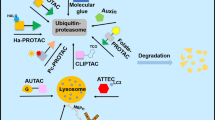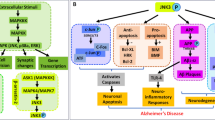Abstract
Nogo-66, a hydrophilic loop of 66 amino acids flank two hydrophobic domains of the Nogo-A C terminus, interacts with the Nogo-66 receptor (NgR) to exert numerous functions in the central nervous system (CNS). Nogo-66 has important roles in aspects of neuronal development, including cell migration, axon guidance, fasciculation, and dendritic branching, and in aspects of CNS plasticity, including oligodendrocyte differentiation and myelination. Here, the small ubiquitin-related modifier (SUMO) was fused to the target gene, Nogo-66, and the construct was expressed in Escherichia coli (E. coli). Under the optimal fermentation conditions, the soluble expression level of the fusion protein was 33 % of the total supernatant protein. After cleaving the fusion proteins with SUMO protease and purifying them by Ni-NTA affinity chromatography, the yield and purity of recombinant Nogo-66 obtained by 10-L scale fermentation were 23 ± 1.5 mg/L and greater than 93 %, respectively. The authenticity of the recombinant Nogo-66 was confirmed by an electrospray ionization-mass spectrometry analysis. The functional analyses indicated that the recombinant Nogo-66 was capable of binding the NgR specifically. The immunofluorescence results showed that the recombinant Nogo-66 could significantly inhibit neurite outgrowth of rat pheochromocytoma (PC12) cells stimulated by nerve growth factor and cerebellar granule cells (CGCs). Furthermore, Nogo-66 inhibited neurite outgrowth by increasing the level of phosphorylated Rho-associated coiled-coil-containing protein kinase 2 (ROCK2), collapsin response mediator protein 2 (CRMP2), and myosin light chain (MLC). This study provided a feasible and convenient production method for generating sufficient recombinant Nogo-66 for experimental and clinical applications.







Similar content being viewed by others
References
Akbik F, Cafferty WBJ, Strittmatter SM (2012) Myelin associated inhibitors: a link between injury-induced and experience-dependent plasticity. Exp Neurol 235(1):43–52. doi:10.1016/j.expneurol.2011.06.006
Butt TR, Edavettal SC, Hall JP, Mattern MR (2005) SUMO fusion technology for difficult-to-express proteins. Protein Expr Purif 43(1):1–9. doi:10.1016/j.pep.2005.03.016
Chong SYC, Rosenberg SS, Fancy SPJ, Zhao C, Shen YAA, Hahn AT, Mcgee AW, Xu XM, Zheng BH, Zhang LI, Rowitch DH, Franklin RJM, Lu QR, Chan JR (2012) Neurite outgrowth inhibitor Nogo-A establishes spatial segregation and extent of oligodendrocyte myelination. Proc Natl Acad Sci U S A 109(4):1299–1304. doi:10.1073/pnas.1113540109
Dai XY, Xiong YL, Xu DD, Li LY, Su ZJ, Zhang QH, Zheng Q (2014) TfR binding peptide screened by phage display technology—characterization to target cancer cells. Trop J Pharm Res 13(3):331–338. doi:10.4314/Tjpr.V13i3.3
Delekate A, Zagrebelsky M, Kramer S, Schwab ME, Korte M (2011) NogoA restricts synaptic plasticity in the adult hippocampus on a fast time scale. Proc Natl Acad Sci U S A 108(6):2569–2574. doi:10.1073/pnas.1013322108
Fitch MT, Silver J (2008) CNS injury, glial scars, and inflammation: inhibitory extracellular matrices and regeneration failure. Exp Neurol 209(2):294–301. doi:10.1016/j.expneurol.2007.05.014
Fournier AE, Strittmatter SM (2001) Repulsive factors and axon regeneration in the CNS. Curr Opin Neurobiol 11(1):89–94. doi:10.1016/S0959-4388(00)00178-1
Fournier AE, GrandPre T, Strittmatter SM (2001) Identification of a receptor mediating Nogo-66 inhibition of axonal regeneration. Nature 409(6818):341–346. doi:10.1038/35053072
Geiss-Friedlander R, Melchior F (2007) Concepts in sumoylation: a decade on. Nat Rev Mol Cell Biol 8(12):947–956. doi:10.1038/Nrm2293
GrandPre T, Nakamura F, Vartanian T, Strittmatter SM (2000) Identification of the Nogo inhibitor of axon regeneration as a Reticulon protein. Nature 403(6768):439–444
GrandPre T, Li S, Strittmatter SM (2002) Nogo-66 receptor antagonist peptide promotes axonal regeneration. Nature 417(6888):547–551. doi:10.1038/417547a
Hao CQ, Zhou Y, Wang JP, Peng MJ, Xie YM, Kang WZ, Sun L, Wang PZ, Wan CL, He L, Cai L, Jia ZS (2014) Role of Nogo-A in the regulation of hepatocellular carcinoma SMMC-7721 cell apoptosis. Mol Med Rep 9(5):1743–1748. doi:10.3892/mmr.2014.2050
Hellal F, Hurtado A, Ruschel J, Flynn KC, Laskowski CJ, Umlauf M, Kapitein LC, Strikis D, Lemmon V, Bixby J, Hoogenraad CC, Bradke F (2011) Microtubule stabilization reduces scarring and causes axon regeneration after spinal cord injury. Science 331(6019):928–931. doi:10.1126/science.1201148
Hu H, Xiang Q, Liu H, Qu H, Tang X, Xiao X, Zhang Q, Su Z, Huang Y (2014) Expression, purification, and biological activity of the recombinant pramlintide precursor. Appl Microbiol Biotechnol 98(18):7837–7844. doi:10.1007/s00253-014-5699-2
Johnson ES (2004) Protein modification by SUMO. Annu Rev Biochem 73:355–382. doi:10.1146/annurev.biochem.73.011303.074118
Joset A, Dodd DA, Halegoua S, Schwab ME (2010) Pincher-generated Nogo-A endosomes mediate growth cone collapse and retrograde signaling. J Cell Biol 188(2):271–285. doi:10.1083/jcb.200906089
Kubo T, Yamaguchi A, Iwata N, Yamashita T (2008) The therapeutic effects of Rho-ROCK inhibitors on CNS disorders. Ther Clin Risk Manag 4(3):605–615
Lindau NT, Banninger BJ, Gullo M, Good NA, Bachmann LC, Starkey ML, Schwab ME (2014) Rewiring of the corticospinal tract in the adult rat after unilateral stroke and anti-Nogo-A therapy. Brain 137:739–756. doi:10.1093/Brain/Awt336
Nash M, Pribiag H, Fournier AE, Jacobson C (2009) Central nervous system regeneration inhibitors and their intracellular substrates. Mol Neurobiol 40(3):224–235. doi:10.1007/s12035-009-8083-y
Petrinovic MM, Hourez R, Aloy EM, Dewarrat G, Gall D, Weinmann O, Gaudias J, Bachmann LC, Schiffmann SN, Vogt KE, Schwab ME (2013) Neuronal Nogo-A negatively regulates dendritic morphology and synaptic transmission in the cerebellum. Proc Natl Acad Sci U S A 110(3):1083–1088. doi:10.1073/pnas.1214255110
Schmandke A, Schmandke A, Strittmatter SM (2007) ROCK and Rho: biochemistry and neuronal functions of rho-associated protein kinases. Neuroscientist 13(5):454–469. doi:10.1177/1073858407303611
Schmandke A, Schmandke A, Schwab ME (2014) Nogo-A: multiple roles in CNS development, maintenance, and disease. Neuroscientist 20(4):372–386. doi:10.1177/1073858413516800
Schwab ME (2010) Functions of Nogo proteins and their receptors in the nervous system. Nat Rev Neurosci 11(12):799–811. doi:10.1038/Nrn2936
Schwab JM, Brechtel K, Mueller CA, Failli V, Kaps HP, Tuli SK, Schluesener HJ (2006) Experimental strategies to promote spinal cord regeneration—an integrative perspective. Prog Neurobiol 78(2):91–116. doi:10.1016/j.pneurobio.2005.12.004
Tews B, Schonig K, Arzt ME, Clementi S, Rioult-Pedotti MS, Zemmar A, Berger SM, Schneider M, Enkel T, Weinmann O, Kasper H, Schwab ME, Bartsch D (2013) Synthetic microRNA-mediated downregulation of Nogo-A in transgenic rats reveals its role as regulator of synaptic plasticity and cognitive function. Proc Natl Acad Sci U S A 110(16):6583–6588. doi:10.1073/pnas.1217665110
Theotokis P, Lourbopoulos A, Touloumi O, Lagoudaki R, Kofidou E, Nousiopoulou E, Poulatsidou KN, Kesidou E, Tascos N, Spandou E, Grigoriadis N (2012) Time course and spatial profile of Nogo-A expression in experimental autoimmune encephalomyelitis in C57BL/6 mice. J Neuropathol Exp Neurol 71(10):907–920. doi:10.1097/Nen.0b013e31826caebe
Vasudevan SV, Schulz J, Zhou CY, Cocco MJ (2010) Protein folding at the membrane interface, the structure of Nogo-66 requires interactions with a phosphocholine surface. Proc Natl Acad Sci U S A 107(15):6847–6851. doi:10.1073/pnas.0911817107
Wang J, Chan CK, Taylor JSH, Chan SO (2008) The growth-inhibitory protein Nogo is involved in midline routing of axons in the mouse optic chiasm. J Neurosci Res 86(12):2581–2590. doi:10.1002/Jnr.21717
Yang YS, Harel NY, Strittmatter SM (2009) Reticulon-4A (Nogo-A) redistributes protein disulfide isomerase to protect mice from SOD1-dependent amyotrophic lateral sclerosis. J Neurosci 29(44):13850–13859. doi:10.1523/Jneurosci. 2312-09.2009
Yiu G, He ZG (2006) Glial inhibition of CNS axon regeneration. Nat Rev Neurosci 7(8):617–627. doi:10.1038/Nrn1956
Zagrebelsky M, Korte M (2014) Maintaining stable memory engrams: new roles for Nogo-A in the CNS. Neuroscience. doi:10.1016/j.neuroscience.2014.08.030
Zhang M, Qiu Z, Li Y, Yang Y, Zhang Q, Xiang Q, Su Z, Huang Y (2013a) Construction and characterization of a recombinant human beta defensin 2 fusion protein targeting the epidermal growth factor receptor: in vitro study. Appl Microbiol Biotechnol 97(9):3913–3923. doi:10.1007/s00253-012-4257-z
Zhang Y, Gao FY, Wu DS, Moshayedi P, Zhang XY, Ellamushi H, Yeh J, Priestley JV, Bo XN (2013b) Lentiviral mediated expression of a NGF-soluble Nogo receptor 1 fusion protein promotes axonal regeneration. Neurobiol Dis 58:270–280. doi:10.1016/j.nbd.2013.06.008
Zhou XD, Hu XY, He WX, Tang XY, Shi Q, Zhang ZH, Yan RQ (2011) Interaction between amyloid precursor protein and Nogo receptors regulates amyloid deposition. FASEB J 25(9):3146–3156. doi:10.1096/Fj.11-184325
Zorner B, Schwab ME (2010) Anti-Nogo on the go: from animal models to a clinical trial. Ann N Y Acad Sci 1198(S1):E22–E34. doi:10.1111/j.1749-6632.2010.05566.x
zur Nedden S, Doney AS, Frenguelli BG (2014) Modulation of intracellular ATP determines adenosine release and functional outcome in response to metabolic stress in rat hippocampal slices and cerebellar granule cells. J Neurochem 128(1):111–124. doi:10.1111/jnc.12397
Acknowledgments
This study was supported by the Natural Science Foundation of China (81202519 and 81403120) and Guangdong Province (S2011040002140), by the Macao Science and Technology Development Fund (102/2012/A3), Fundamental Research Funds for the Central Universities Project (21611378), supported by Guangdong Province Higher Vocational Colleges and Schools Pearl River Scholar Funded Scheme (2012) (21613408) and Ocean and Fisheries Foundation of Guangdong Province (A201301B09). The authors are grateful to Minjing Zhang, Xue Xiao, and Zhijian Wu for the technical assistance.
Conflict of interest
The authors declare that they have no conflict of interest.
Ethical statement
This work complied with the Ethical Standards of the Committee on Publication Ethics (COPE).
Author information
Authors and Affiliations
Corresponding authors
Additional information
Xiaoyong Dai and Zhongqing Sun contributed equally to this work.
Electronic supplementary material
Below is the link to the electronic supplementary material.
ESM 1
(PDF 93 kb)
Rights and permissions
About this article
Cite this article
Dai, X., Sun, Z., Liang, R. et al. Recombinant Nogo-66 via soluble expression with SUMO fusion in Escherichia coli inhibits neurite outgrowth in vitro. Appl Microbiol Biotechnol 99, 5997–6007 (2015). https://doi.org/10.1007/s00253-015-6477-5
Received:
Revised:
Accepted:
Published:
Issue Date:
DOI: https://doi.org/10.1007/s00253-015-6477-5




